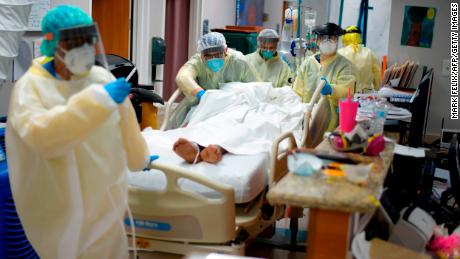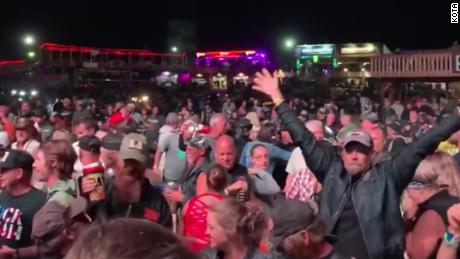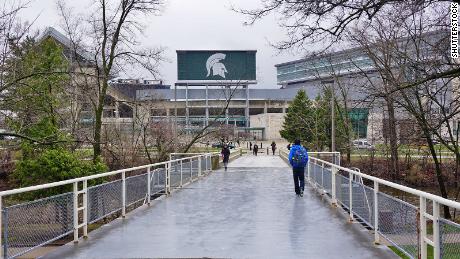Most Americans won’t get vaccine until mid-2021
While a “very limited supply” of a Covid-19 vaccine might be ready in November or December, it “will have to be prioritized,” CDC Director Dr. Robert Redfield told a Senate appropriations subcommittee Wednesday.
“It will be those first responders and those at greatest risk for death, and then eventually that will expand,” he said.
“If you’re asking me when is it going to be generally available to the American public, so we can begin to take advantage of vaccine to get back to our regular life, I think we’re probably looking at third, late second quarter, third quarter 2021.”
On top of that, “in order to have enough of us immunized so we have immunity, I think it’s going to take us six to nine months,” he said.
Vaccine distrust remains an issue
Then there’s the issue that needs to be urgently addressed: people who are hesitant to get the vaccine, National Institutes of Health Director Dr. Francis Collins said Wednesday.
“Those who are vaccine hesitant have had their hesitancy enhanced by a variety of things that are happening right now, particularly the unfortunate mix of science and politics,” Collins said at an event hosted by the National Academies of Sciences, Engineering and Medicine.
“I don’t want to have us, a year from now, having a conversation about how we have in our hands the solution to the worst pandemic of more than 100 years, but we haven’t been able to actually convince people to take charge of it,” Collins said.
And distrust in government agencies is hindering surveillance of Covid-19 spread, said Michael Osterholm, director of the Center for Infectious Disease Research and Policy at the University of Minnesota.
“It is very challenging in many areas today, where we’re seeing people who do not want to participate in any kind of follow up with regard to surveillance, because of their distrust of government and the public health system,” c said during an American Public Health Association webinar.
Surveillance helps public health officials by collecting information on infected people, such as where they were exposed and who they’ve been in contact with, and the course of their illness.
Dr. Anthony Fauci, the nation’s top infectious disease official, said the variability in how the coronavirus affects people has helped fuel misunderstandings about who can spread the virus and when.
At least 40% of patients have no symptoms, while some stay ill for months on end, Fauci said.
“One of the things we’re dealing with in this country is a real lack of understanding of the importance of everybody trying to prevent getting infected rather than inadvertently… propagating the outbreak…” Fauci said during a virtual panel sponsored by the Congressional Hispanic Caucus Institute.
Of all the viral diseases and emerging infections that he’s encountered throughout his career, Fauci said he has “never seen anything with a range” like this virus.
“It’s just completely unique to see that degree of variability of a single microbe, which means there are things that are determining that, that we still at this point don’t understand,” he said.
Masks are a ‘powerful’ tool, Redfield said
But Redfield said Americans already have a weapon he believes could be more effective against Covid-19: face masks.
“These face masks are the most important, powerful public health tool we have,” Redfield said, holding up a blue face mask.
“If we did it for six, eight, 10, 12 weeks, we’d bring this pandemic under control,” he said.
“I might even go so far as to say that this face mask is more guaranteed to protect me against Covid than when I take a Covid vaccine, because the immunogenicity may be 70%. And if I don’t get an immune response, the vaccine’s not going to protect me. This face mask will.”
Yet time and again, people gather and socialize without wearing face masks — sometimes leading to tragic results.
7 coronavirus deaths are linked to 1 wedding
For months, doctors have stressed the importance of wearing masks, social distancing, and avoiding large gatherings.
The wedding in Millinocket on August 7 had about 65 guests, a violation of the state’s 50-person limit for indoor events, the Maine Center for Disease Control and Prevention said.
The event is linked to outbreaks that have unfolded at a nursing home and a jail, both more than 100 miles away from the wedding venue, among people who had only secondary or tertiary contact with an attendee.
Residents at Maplecrest Rehabilitation and Living Center accounted for 39 cases tied to the wedding and six of the seven deaths thus far, Maine CDC Director Dr. Nirav D. Shah said.
“The virus favors gatherings,” Shah added. “It does not distinguish between happy events like a wedding celebration, or sad farewells, like a funeral.”
Despite such somber warnings, about 1,500 people descended on a New Jersey boardwalk house featured in MTV’s “Jersey Shore” on Monday night, ending in eight arrests, Seaside Heights police said.
The event was organized by a group of YouTube pranksters, according to Seaside Heights Police Detective Steve Korman, and officials say they are now worried about how they will track possible infections among more than a thousand people.
Universities try to get ahead of outbreaks
More than 50,000 coronavirus cases have been reported at colleges and universities in all 50 states.
Citing a significant rise in cases among students, the University of Colorado Boulder announced a 14-day quarantine period for students living within the city.
At the University of Missouri, two students were expelled and three were suspended for violating rules that require students who test positive to isolate and comply with social distancing.
Returning to normal is a long way off
Officials are trying to prepare the public for a pandemic-altered life for a few more months — if not years.
Dr. Soumya Swaminathan, chief science officer at the World Health Organization in Geneva, said the world might not be able to return to “pre-Covid” life until 2022.
Swaminathan said 60% to 70% of the global population would need to have immunity before there is a dramatic reduction in transmission of the virus.
“We’re looking at 2022 at least before enough people start getting the vaccine to build immunity,” she told journalists during a virtual meeting hosted by the United Nations Foundation.
“So for a long time to come, we have to maintain the same kind of measures that are currently being put in place with physical distancing, the masking and respiratory hygiene.”
CNN’s Anna Sturla, Naomi Thomas, Maggie Fox, Elizabeth Hartfield, Jennifer Feldman, Jaqueline Howard, Andrea Diaz, Nakia McNabb, Lauren Mascarenhas, Gisela Crespo and Theresa Waldrop contributed to this report.
![]()








